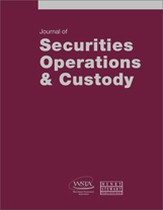Integrating private assets in a total portfolio approach
Abstract
In a total portfolio approach (TPA) asset owners use their entire capital to maximise the net impact of their investments by diversifying over risk factors. The focus is on allocation to risk exposures rather than asset classes, as in the traditional strategic asset allocation (SAA). Compared to the SAA, the TPA leads to better quality of decision making by using a factor lens that embraces the continuum between equity and debt as well as across public and private markets. The increasing adoption of the TPA coincides with what has even been termed ‘hypergrowth’ of investing in private markets. Many asset owners may be overestimating their liquidity needs and thus be foregoing valuable opportunities for investing in private assets and harvesting an illiquidity premium. As the costs of illiquidity do not depend on the asset but the specific state of a portfolio, TPA requires frequently generated cash flow forecasts for investments in these illiquid assets. By following the TPA and by treating private assets on an equal footing to liquid asset classes, asset owners can construct their portfolios in a new and innovative way that has the potential to sustainably generate higher returns. Newer risk factor models in combination with highly automated cash flow forecasting tools create a unifying framework whereby risks are measured more realistically, and a private asset’s illiquidity is not penalised if no liquidity is needed within the portfolio’s context.
The full article is available to subscribers to the journal.
Author's Biography
Thomas Meyer PhD is Director of SimCorp Luxembourg s.à.r.l. (part of Deutsche Börse Group). He has held an international career in and out of the financial services, from intelligence officer in the German Air Force to regional CFO of Allianz Asia Pacific in Singapore. He was responsible for the creation of the European Investment Fund’s risk management function with focus on building valuation and risk management models and investment strategies for venture capital funds of funds. Since 2020, he has been leading the development of SimCorp Dimension’s Alternatives Strategy solution. Thomas is a Shimomura Fellow of the Development Bank of Japan and was a visiting research fellow at Hitotsubashi University in Tokyo. He latest book is The Art of Commitment Pacing (Wiley). He is the co-author of Beyond the J Curve (translated into Chinese, Japanese and Vietnamese), J-Curve Exposure, Mastering Illiquidity (all Wiley) and two CAIA books, which are required reading for Level II of the Chartered Alternative Investment Analyst® Program. He has also authored Private Equity Unchained (Palgrave MacMillan).
